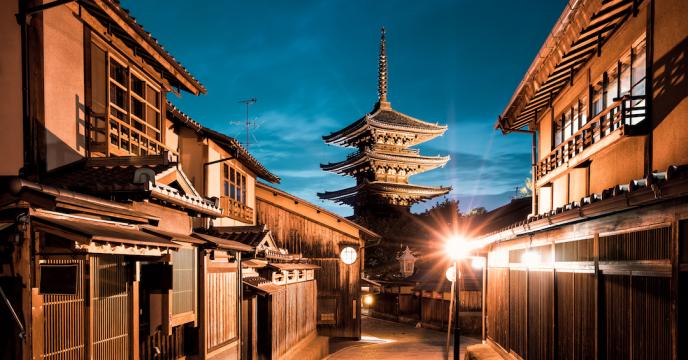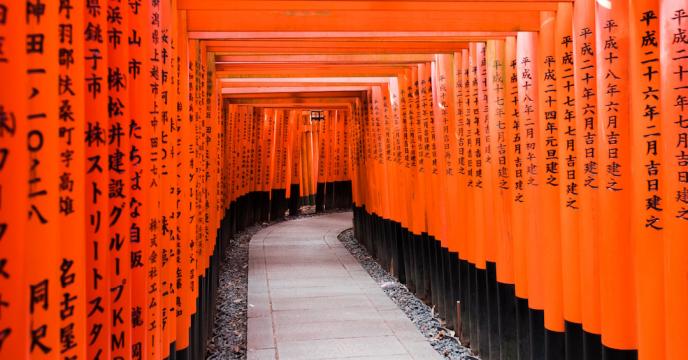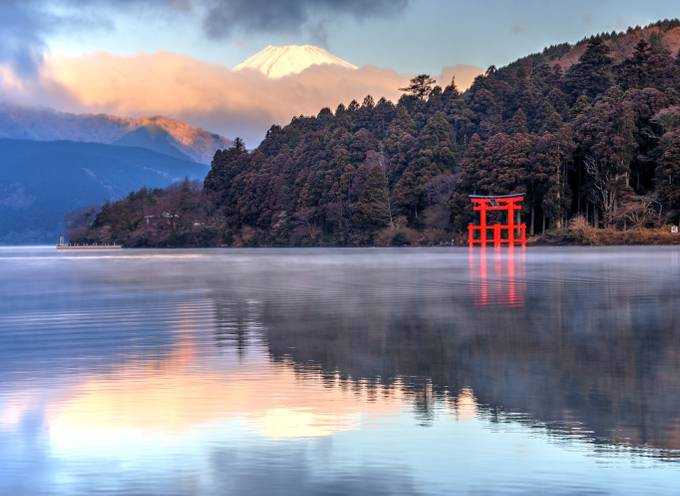
Japan Travel Guide
Japan is timeless: its ancient temples, soaring skyscrapers, progressive technology and abundant nature from forests to idyllic beaches can keep the pickiest traveller busy. Even when you’ve conquered the spring flowers, fall colours, Geisha dances and Tokyo’s hustle, you’ll find the reason, again and again, to return to the fascinating, ever-changing Land of the Rising Sun.
The Highlights


The Basics
The Location
Japan is an island nation in East Asia, located in the Pacific Ocean. It consists of thousands of islands, but the largest four are Honshu, Hokkaido, Kyushu and Shikoku. Flying to Tokyo from the UK and New York takes between 11-14 hours.
Capital City
Tokyo is located on the main island of Honshu and is home to over 9 million people. It’s known for its busy streets, quirky restaurants and a mix of the ancient and modern worlds. Tokyo is also the city with the most Michelin stars in the world.
Main Airport
Tokyo has two international airports, Narita and Haneda Airports. Outside of Tokyo, the main airport is Osaka’s Kansai Airport.
- Major airlines
- Japan Airlines and All Nippon Airways
Language Spoken
The official language of Japan is Japanese. English is not spoken commonly outside of major metropolitan areas like Tokyo.
Currency
Japan uses the Japanese yen (¥). The currency code is JPY. You can order in yen at a currency exchange prior to your trip, at the airport on arrival or withdraw money from ATMs and banks in Japan.
Visas
Australian, British, Canadian and US citizens do not need a visa when visiting Japan for stays up to 90 days. Visa information can change often and varies from country to country. We recommend checking your country’s travel advisories in advance of booking a trip.
Electricity
The Japanese voltage is 100V/50-60Hz, different from North America (120V) and Central Europe (230V). Japanese sockets and plugs are compatible with American electrical devices.
Vaccinations
While no vaccinations are compulsory for entry into Japan, talk to your doctor about whether you should get a Hepatitis A and B vaccine, and depending on the length of your trip and where you’re going, you may need a vaccine for Encephalitis or Rabies.
Emergency Calls
The phone number to call in case of emergency is 119 for fire and ambulance and 110 for police.
When to Visit

Japan Tours

Visit Responsibly
Travelling responsibly means respecting the communities, culture and environment of the places you visit. Keep these tips in mind when travelling to Japan:
Go green. Be environmentally conscious on the road by taking short showers; turning off the lights in your hotel room when you leave; and resisting the urge to collect any plants, seashells, or other natural flora.
Respect cultural differences. Before travelling, read about the local culture and customs – even just knowing the dress code and a few basic phrases in the local language will go a long way.
Support local businesses. Enjoy a more authentic experience and directly support the local economy by travelling with a local guide, eating in local restaurants, buying from local artisans, and staying in locally-owned and operated accommodations.
Wherever possible, avoid single-use plastics. Pack reusable items such as your own shopping bags, utensils, a water bottle, and a straw. These items are typically lightweight and compact, and will greatly reduce your consumption of plastics.
Be conscious of overtourism. Opt to visit the lesser-known regions of Japan or travel outside the peak season – you'll likely even get a better deal and won't have all the crowds!Sustainable Tourism in Japan
Ecotourism Japan (EJ)
An NGO focused on creating a network of tour operators, researchers, and professionals, Ecotourism Japan (EJ) aims to revitalize local communities. In addition, EJ has a web portal called “eco-tour.jp” that is dedicated to providing people with information on ecotourism, conservation, nature-based tours, and more!
Low-Waste Town
For nearly two decades, the rural town of Kamikatsu has been implementing low-waste practices such as separating household trash into more than 30 categories. Now, approximately 80 percent of Kamikatsu’s waste is either recycled, reused, or composted – making it almost a “zero-waste” economy. Residents also have the ability to bring any clothes or household items they no longer need to a “kuru-kuru” store, where they can exchange them for other goods.
Mottainai
The Japanese word mottainai, which translates to “don’t waste anything worthy,” plays an instrumental role in the nation’s environmental awareness. Influenced by the Buddhist culture, mottainai focuses on the essence of objects. It encourages people to respect each item and look beyond the wasteful mindset. With this word guiding the Japanese, it’s no surprise they’re a world leader in recycling, reusing, and reducing waste.
FAQs about Japan
Do you tip in Japan?
It is not customary to tip in Japan and might be taken as an insult if you do.
What is the internet access like?
The majority of hotels offer free wi-fi, although some will still charge in 24-hour increments. Train and subway platforms and Starbucks offer free wi-fi, although sometimes the signal is weak. You can pay to go online at Internet Cafes, prices ranging from 200 to 700 yen per hour.
Is the tap water safe to drink?
Tap water is safe to drink in Japan, although varying regions have different tasting water, so you may prefer to buy it bottled.
Can I use my credit cards?
The use of cash is prevalent in Japan and some places do not accept credit cards. Look for foreign-friendly ATMs (usually at post offices and 7-Eleven stores) and take out enough cash in case you can’t use your credit card.
What are the public holidays?
Japan has a total of 16 public holidays, many with interesting backstories. To name a few, there is Greenery Day (to give thanks to nature; many parks and gardens waive entrance fees), Children’s Day (to wish kids good luck on their journey to adulthood) and both Spring and Autumnal Equinox Days.
What are the toilets like?
Toilets in Japan are some of the best and high-tech in the world. The bidet, a toilet and post-restroom cleaner - or ‘freshener’ - combined, is common in Japan, but you may also encounter a squat toilet. Both of these are extremely hygienic.
When and where can I see cherry blossoms?
The cherry blossom season changes a little year to year, but the peak is March and April over roughly two weeks. It takes place throughout Japan, but the best places are Mount Yoshino, Mount Fuji, Kyoto and Shinjuku Gyoen in Tokyo.
What is the Golden Week in Japan?
Golden Week refers to a rare accumulation of Japanese national holidays where students and the working population enjoy the longest vacation period of the year. Tourists should avoid travelling to Japan during this time (typically end of April through May).














